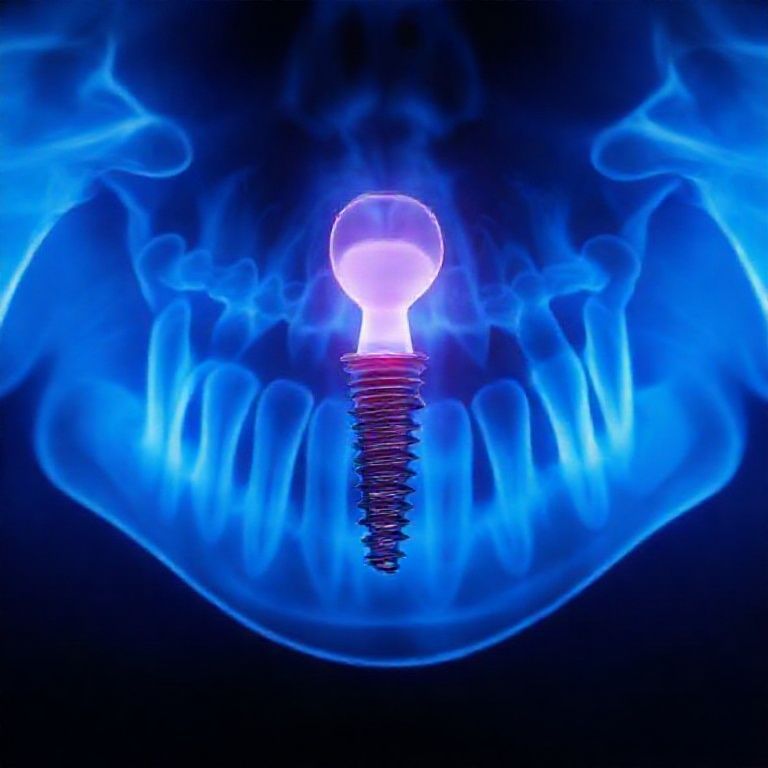The True Cost of Dental and Vision Insurance
- On
- InDENTAL INSURANCE
In the complex landscape of American healthcare, where debates over medical premiums and prescription drug costs dominate headlines, two critical pillars of our well-being often languish in the shadows: our oral and visual health. We diligently research medical insurance plans, yet when it comes to dental and vision coverage, many of us make decisions based on a vague sense of necessity or a quick glance at a premium price. This oversight carries significant consequences. A sudden toothache can escalate from a minor inconvenience to a root canal costing thousands of dollars in a matter of days. A child’s struggling performance in school could be traced back to an undiagnosed vision problem, easily corrected with a pair of glasses.
This article seeks to pull dental and vision insurance out of the shadows and into the clear light of strategic financial planning. We will embark on a detailed exploration that goes far beyond simple monthly premiums. We will deconstruct the very architecture of these insurance products, analyzing the nuanced costs, the often-confusing coverage limitations, and the hidden value propositions. Is dental insurance a cost-effective tool for maintenance, or a financial trap when major work is needed? Are vision discount plans a clever hack or a false economy? When does it make financial sense to forego insurance altogether and self-fund your care?
This is not just an article about insurance; it is a guide to making empowered decisions about your health and your finances. By the end of this comprehensive analysis, you will possess the knowledge to navigate this complex market with confidence, ensuring that your smile and your sight are protected without compromising your financial stability.

Table of Contents
TogglePart I: Demystifying Dental Insurance
Dental insurance operates on a fundamentally different principle than major medical insurance. Its primary focus is not on catastrophic, unpredictable events, but on prevention and predictable, manageable costs. Understanding this core philosophy is key to evaluating its true value.
The Anatomy of a Dental Plan: Key Terms You Must Know
Before comparing plans, you must be fluent in the language of dental insurance.
-
Premium: The fixed amount you (or your employer) pay monthly or annually to maintain the insurance policy.
-
Deductible: The amount you must pay out-of-pocket for certain services before your insurance begins to contribute. This typically applies to basic and major procedures, but not preventive care.
-
Annual Maximum: The absolute maximum amount the insurance company will pay for your dental care within a benefit year. This is a critical and often limiting factor. Once you exceed this cap (e.g., $1,000, $1,500, $2,000), you are responsible for 100% of all additional costs.
-
Copayment/Coinsurance: Your share of the cost for a covered service, calculated as a percentage. For example, a plan may cover 100% of preventive care, 80% of basic procedures (like fillings), and 50% of major procedures (like crowns). Your coinsurance for a crown would be 50%.
-
Waiting Period: A specified period after your policy begins during which you cannot receive coverage for certain (usually major) procedures. This prevents people from buying insurance only when they need an expensive treatment.
The Three Primary Models of Dental Insurance
The structure of your plan dictates your freedom of choice and how costs are managed.
-
Dental Health Maintenance Organization (DHMO): Also known as a capitation plan. You must choose a primary care dentist from a fixed network. There are no annual maximums or deductibles. You pay a fixed copayment for each service (e.g., $10 for a cleaning, $25 for a filling). Premiums are typically the lowest, but you have no coverage for out-of-network providers.
-
Best for: Budget-conscious individuals and families who are comfortable with a restricted network and prioritize predictable, low out-of-pocket costs for routine care.
-
-
Dental Preferred Provider Organization (DPPO): The most common type of plan. You have the freedom to see any dentist, but you save significantly more money by using dentists within the plan’s PPO network. These network dentists have agreed to negotiated discounted rates. The plan features premiums, deductibles, coinsurance, and an annual maximum.
-
Best for: Those who want a balance of choice and cost savings and are willing to pay a higher premium for flexibility.
-
-
Dental Indemnity Plan: The most flexible and traditional form of insurance. You can see any dentist you wish. The insurance company pays a set percentage of the “usual, customary, and reasonable” (UCR) fee for a service, regardless of the dentist. There is no network, but you are responsible for any difference between the dentist’s actual charge and the UCR fee. Premiums are the highest.
-
Best for: Individuals who highly value complete freedom of choice and are willing to pay a premium for it.
-
The Real Cost of Dental Insurance: Premiums, Deductibles, and Maximums
The true cost is a composite of all these factors. Let’s analyze a typical mid-tier PPO plan with a $50 annual deductible, an 80/50 coinsurance structure, and a $1,500 annual maximum.
-
Annual Premium: $360 ($30/month).
-
Two Routine Cleanings & Exams: Typically covered at 100% with no deductible. This is the core value proposition.
-
Scenario A: A Single Filling. The dentist charges $200. You pay the $50 deductible, then 20% of the remaining $150 ($30). Your total out-of-pocket is $80. The insurance paid $120. In this scenario, your total spending for the year was $360 (premium) + $80 (out-of-pocket) = $440. Without insurance, you would have paid $200. Insurance was a net loss this year.
-
Scenario B: A Root Canal and Crown. The total cost is $3,000. You pay the $50 deductible. The insurance covers 50% of the next $1,450 (its $1,500 maximum minus your $50 deductible), paying $725. You are responsible for the remaining $2,275 ($50 deductible + $725 coinsurance + $1,500 above the maximum). Your total spending: $360 (premium) + $2,275 (out-of-pocket) = $2,635. Without insurance, you would have paid $3,000. You saved $365, but still faced a massive bill.
This illustrates the fundamental nature of dental insurance: it is designed to make predictable, routine care affordable, but it provides a safety net, not a blanket, for major procedures due to the annual maximum.
Part II: Illuminating Vision Insurance
Vision insurance functions even more distinctly from medical insurance. It is primarily a pre-paid benefit plan for routine, expected expenses rather than a safeguard against risk.
Beyond 20/20: What Vision Insurance Actually Covers
A standard vision plan is built around an annual or biennial (every two years) benefit that typically includes:
-
A Comprehensive Eye Exam: Covered in full or with a small copay.
-
Eyewear Allowance: A fixed dollar amount (e.g., $150) to be applied toward the purchase of frames.
-
Lens Benefits: Coverage for standard single-vision, bifocal, or progressive lenses, often with an upgrade fee for premium options like anti-reflective coating or transitions.
-
Contact Lens Allowance: Often an alternative to the glasses benefit, providing a fixed allowance or covering a specific brand of contacts.
The Two Worlds of Vision Care: Discount Plans vs. Insurance Plans
This is a critical distinction that consumers often miss.
-
Vision Insurance Plans: These are true insurance policies. You pay a premium and the plan agrees to pay for specific services and materials as outlined in the policy (e.g., one exam, one pair of glasses per year).
-
Vision Discount Plans: These are not insurance. You pay an annual membership fee (usually lower than an insurance premium) which grants you access to discounted rates from a network of providers. You pay the entire discounted amount out-of-pocket. For example, you might get 20% off frames and 15% off an exam.
Deconstructing the Cost of Vision Insurance
Let’s analyze a typical vision insurance plan with a $120 annual premium ($10/month).
-
Annual Premium: $120
-
Benefits:
-
Eye Exam: Covered with a $10 copay (Retail: $100)
-
Frames Allowance: $130
-
Basic Lenses: Covered in full
-
-
Scenario: You buy a frame costing $200 and get basic lenses.
-
Without Insurance: $100 (exam) + $200 (frame) + $80 (lenses) = $380
-
With Insurance: $120 (premium) + $10 (copay) + $70 (frame cost above allowance) + $0 (lenses) = $200
-
In this case, the insurance provided a net saving of $180. The value is clear and direct, making it an excellent deal for anyone who reliably gets new glasses or contacts every year.
Part III: The Financial Crossroads – Analyzing the True Value
This is where we synthesize the data to answer the ultimate question: Is it worth it?
The Standalone vs. Bundled Conundrum
Many employers offer dental and vision as part of a voluntary benefits package. The group rates are often highly subsidized, making them an undeniable value. For example, an employee might pay only $10/month for dental and $5/month for vision. At this price point, the plans are almost always financially beneficial for anyone who uses the services.
The calculus changes in the individual market. Purchasing standalone plans can be expensive, and you must carefully project your usage.
The Self-Insurance Alternative: Are Savings Accounts a Smarter Bet?
For individuals with excellent oral and visual health, “self-insuring” can be a smarter financial strategy. This involves setting aside the money you would have spent on premiums into a dedicated savings account or a Health Savings Account (HSA).
-
Example: Instead of paying $50/month ($600/year) for a dental PPO and a vision plan, you deposit that $600 into an HSA.
-
Year 1: You need only a cleaning ($100) and an eye exam ($100). You pay $200 from your HSA, leaving $400 to grow tax-free.
-
Year 2: You need nothing. Your balance grows.
-
Year 3: You need a crown costing $1,500. You have $600 (Year 1 rollover) + $600 (Year 2) + $600 (Year 3) = $1,800 saved. You can cover the entire cost without fighting an annual maximum, and any unused funds remain yours.
This approach requires discipline and a tolerance for risk, but it can be far more cost-effective for the healthy.
Annual Cost-Benefit Analysis of Dental & Vision Insurance Scenarios
| Scenario | Annual Premium | Expected Services | Total Out-of-Pocket Cost (with Insurance) | Total Cost Without Insurance | Net Financial Gain/(Loss) | Verdict |
|---|---|---|---|---|---|---|
| 1. Low Usage (Individual) | ||||||
| Dental (PPO) + Vision | $600 | 1 Cleaning, 1 Exam, No Glasses | $600 (premium only) | $250 | ($350) | Poor Value |
| 2. Moderate Usage (Individual) | ||||||
| Dental (PPO) + Vision | $600 | 2 Cleanings, 1 Filling ($150), 1 Exam, New Glasses ($300) | $600 + $50 (ded) + $30 (fill) = $680 | $250 + $150 + $100 + $300 = $800 | $120 | Good Value |
| 3. High Usage (Individual) | ||||||
| Dental (PPO) | $400 | Crown Procedure ($1,500) | $400 + $50 (ded) + $1,450 (coinsurance/max) = $1,900 | $1,500 | ($400) | Poor Value |
| 4. Employer-Subsidized | ||||||
| Dental + Vision | $180 | 2 Cleanings, 1 Filling, 1 Exam, New Glasses | $180 + $50 + $30 = $260 | $800 | $540 | Excellent Value |
| 5. Self-Insurance (HSA) | ||||||
| N/A | $0 | Crown Procedure ($1,500) | $1,500 (from HSA) | $1,500 | $0 (but HSA funds are yours) | Good for the disciplined saver |
(This table is a simplified model. Actual costs will vary.)
Part IV: Strategic Navigation – How to Choose the Right Plan for You
Armed with this knowledge, your decision-making process should be systematic.
-
Conduct a Personal Health Audit: Review your and your family’s dental and vision history. Do you have cavities frequently? Do your children need yearly glasses updates? Are you anticipating any major dental work? Your past usage is the best predictor of future needs.
-
Scrutinize the Provider Network: The best plan is useless if your favorite dentist or a highly-recommended specialist isn’t in-network. For DPPOs, use the insurer’s online directory to verify participation.
-
Decode the Fine Print: Pay close attention to the annual maximum (the single most important number for dental), waiting periods for major services (like crowns or orthodontics), and any exclusions for specific procedures (e.g., adult orthodontics, cosmetic procedures, certain types of implants).
-
Shop and Compare Holistically: Don’t just look at premiums. Use a spreadsheet to model different scenarios based on your health audit. Factor in the deductible, coinsurance, and maximums for the services you are most likely to use.
Part V: The Future of Dental and Vision Coverage
The landscape is evolving rapidly. Teledentistry platforms are offering affordable virtual consultations. Online retailers and in-store kiosks are using technology to provide prescription glasses at a fraction of traditional cost. There is a growing movement in healthcare to integrate medical, dental, and vision data, recognizing that oral health is intimately linked to systemic conditions like diabetes and heart disease. We may see a future where these benefits are less siloed and more part of a holistic health plan.
Conclusion: An Investment in Whole-Person Wellness
Dental and vision insurance are not mere financial products; they are strategic tools for proactive health management. Their value is not absolute but is intensely personal, dictated by your health, your financial discipline, and the specific terms of the plan. Employer-subsidized plans often provide undeniable value, while individual plans require careful, scenario-based analysis. For some, the best insurance may be their own disciplined savings. By moving beyond the premium and understanding the intricate mechanics of deductibles, maximums, and allowances, you can transform this often-overlooked decision into a confident investment in your long-term well-being and financial health.
Frequently Asked Questions (FAQs)
1. I have excellent teeth and 20/20 vision. Do I need either insurance?
Probably not. For individuals with a proven history of minimal need, you are likely better off “self-insuring” by setting aside the money you would have paid in premiums into a savings account or HSA to cover any unexpected costs. This way, you don’t lose unused premium dollars at the end of the year.
2. Can I use my HSA or FSA for dental and vision expenses?
Yes. HSAs (Health Savings Accounts) and FSAs (Flexible Spending Accounts) are excellent tools for this. You can use these tax-advantaged funds to pay for a wide range of qualified medical, dental, and vision expenses, including deductibles, copays, eyeglasses, contact lenses, and orthodontics. This is a key component of a self-insurance strategy.
3. Why is there a low annual maximum on dental plans?
The annual maximum is a core cost-control mechanism for insurers. Unlike major medical insurance, which protects against rare, catastrophic costs, dental insurance is designed to manage predictable, routine care. The maximum caps the insurer’s liability, keeping premiums lower and making the product viable for them to sell. It reflects the plan’s design as a maintenance tool rather than comprehensive catastrophe coverage.
4. Are there dental plans without waiting periods?
Yes, but they are less common and often more expensive. Some plans may waive waiting periods for preventive care from day one but maintain them for basic and major procedures. DHMOs often have no waiting periods. If you need major work immediately, look for a plan that specifically advertises no waiting periods or consider a dental savings plan as a short-term alternative.
5. What is the difference between a vision insurance plan and a vision discount plan?
This is a crucial distinction. A vision insurance plan is a true insurance policy where you pay a premium and the insurer pays for covered services (e.g., an exam, lenses) as defined in the policy. A vision discount plan is a membership club; you pay an annual fee to access pre-negotiated discounts from a network of providers, but you pay 100% of the discounted price out-of-pocket. Discount plans have lower fees, while insurance plans provide more comprehensive pre-paid benefits.
Additional Resources
-
National Association of Dental Plans (NADP): https://www.nadp.org/ – A resource for understanding dental benefits and finding plan information.
-
Vision Council: https://thevisioncouncil.org/ – Provides consumer information on eye health and vision care products.
-
Healthcare.gov: While primarily for medical insurance, it provides context on how ancillary benefits fit into the larger healthcare system.
-
Your State’s Department of Insurance: Regulates insurance companies and can be a resource for filing complaints or understanding your rights as a consumer.
Date: October 4, 2025
Author: The Financial Wellness Group
Disclaimer: The information provided in this article is for educational and informational purposes only and does not constitute financial, medical, or insurance advice. You should consult with a qualified professional regarding your individual needs and circumstances before making any insurance decisions. Premiums and plan details are subject to change and vary by provider, location, and individual factors.
dentalecostsmile
Newsletter Updates
Enter your email address below and subscribe to our newsletter


